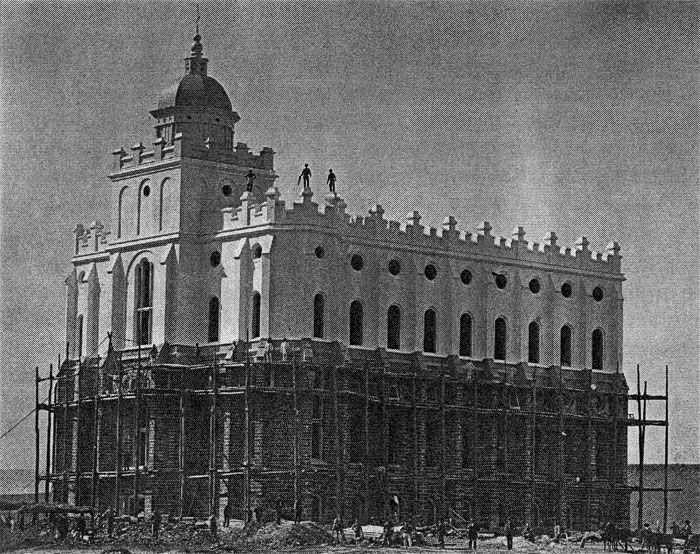The Juanita Brooks Lecture Series
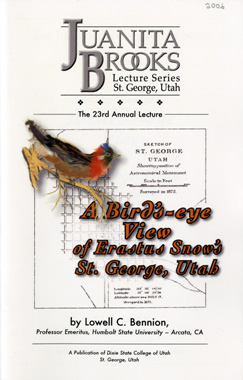
The 23rd Annual Lecture
A Bird’s-eye View of Erastus Snow’s St. George
by Lowell C. Bennion
St. George Tabernacle
March 22, 2006
7:00 P.M.
Co-sponsored by Val Browning Library, Dixie State College
St. George,
Utah
and the Obert C. Tanner Foundation
About Juanita Brooks
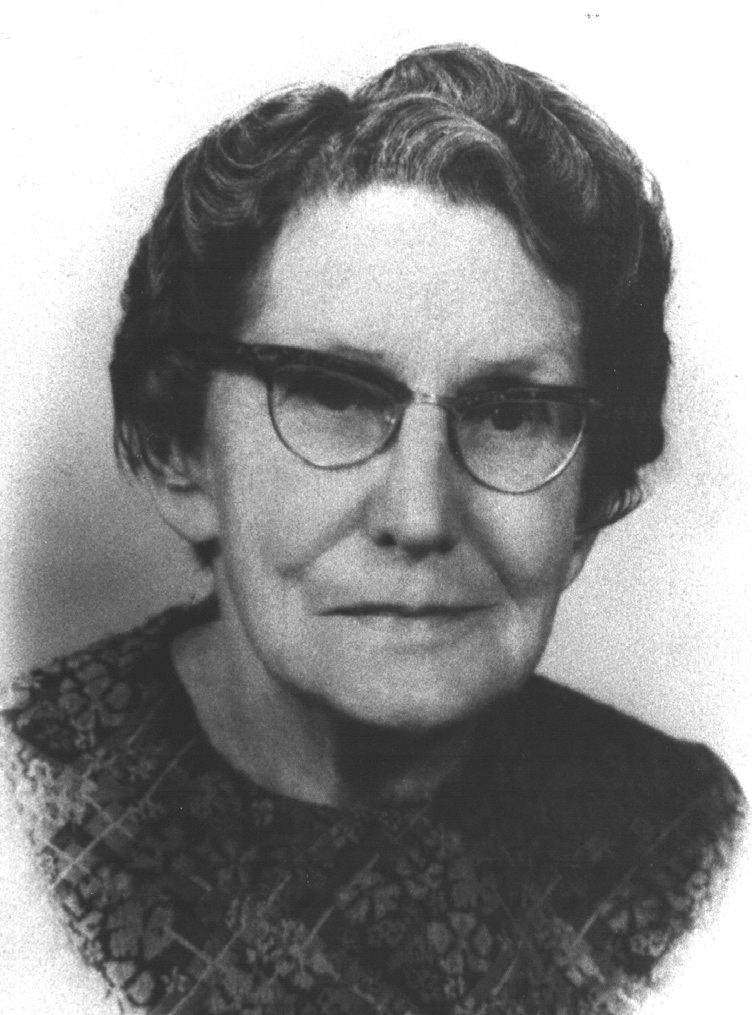
Juanita Brooks was a professor at [then] Dixie College for many years and became a well-known author.
She is recognized, by scholarly consent, to be one of Utah’s and Mormondom’s most eminent historians. Her total honesty, unwavering courage, and perceptive interpretation of fact set more stringent standards of scholarship for her fellow historians to emulate. Dr. Obert C. and Grace Tanner had been lifelong friends of Mrs. Brooks and it was their wish to perpetuate her name through this lecture series. Dixie State College and the Brooks family express their thanks to the Tanner Family.
About the author
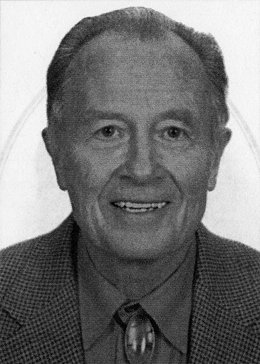
Lowell C. “Ben” Bennion received his Ph.D. in Geography from Syracuse University. He taught for five years at Indiana University and thirty years at Humboldt State University before retiring to his hometown of Salt Lake City in the year 2000. He has written several articles related to Mormonism’s geographical dynamics and has coauthored three books — a prize-winning Sanpete Scenes: A Guide to Utah’s Heart (2nd ed., 2004), Traveling the Trinity Highway (3rd printing, 2003), and Polygamy in Lorenzo Snow’s Brigham City: An Architectural Tour (2005). He is currently working on two other books related to “Plural Wives and Tangled Lives: Polygamy’s Place in Mormon Society, 1850-90,” one of which will feature a chapter on Elizabeth Kane’s 1873 sojourn in St. George. Ben gratefully acknowledges the support his research has received from the Charles Redd Center for American West Studies and the former Smith Institute for LDS History at Brigham Young University.
A Bird’s-eye View of Erastus Snow’s St. George
St. George as Viewed by Varied Birds
Four considerations prompted me to accept Professor Alder’s invitation to present this year’s Juanita Brooks lecture, intimidating as such an honor is. Decades ago at Dixie College, fellow geographer Merrill Ridd and I participated in a lecture series arranged by Charles Peterson, then a history professor at Utah State University. We titled our presentation “Utah’s Dynamic Dixie: Satellite of Salt Lake, Las Vegas, or Los Angeles?”1 Although asked to focus on the post-1940 period, we kept wondering how a once tiny St. George became the center of such a huge hinterland. In seeking answers we discovered the illuminating writings of Juanita Brooks and Karl Larson, who were gracious enough to let two naive geographers ask them questions about this intriguing region.
A second factor came from my great-grandfather Bennion’s checkered experience in the Southern Utah Mission. When called to Dixie in late 1864, he arranged with Apostle Erastus Snow to hire a substitute, William E. Jones, a poor Welshman who took his place and stayed in the South — always struggling with two wives to get out of poverty. When called again in 1868, John Bennion felt more inclined to accept the challenge; he moved south with the second of his three wives and her sons to establish a home, first on the Muddy, then in Meadow Valley, both of which shortly became part of Nevada. For the next few years John lived seasonally either in Dixie or on one of two farms in northern Utah until he finally wearied of rounding up sheep herds scattered across southern deserts. His name appears twice in the 1870 census — first in West Jordan (when he was in Panaca), then in Panaca (when he was in West Jordan).2
A third motive may have led to the lecture invitation, for Dr. Alder knew I had started writing a book about the Twelve Mormon Homes and families visited by the Thomas L. Kanes in the winter of 1872-73. It took the Kane Company led by Brigham Young twelve days to travel from Salt Lake to St. George. Ironically, Elizabeth Kane’s account of the trip, published a year later, devoted only two pages to the place where they sojourned for two months, hoping the climate would improve the General’s health. Fortunately, she continued her journal while residing in St. George, but it did not appear in print for another 120 years.3 (For both books, now out of print, we are indebted to Obert & Grace Tanner, co-sponsors with the Val Browning Library of this lecture series.) Thanks to Mrs. Kane’s second book, our Twelve Mormon Homes Revisited volume will give more space to Erastus Snow’s “Big House” in St. George than to any of the eleven homes where the Kanes stayed only a night or two.
Finally, when Alder’s Dixie call came, colleagues and I had all-but-finished a somewhat similar project for Lorenzo Snow’s Brigham City. That book maps the extent of polygamy and offers a “tour” of the different kinds of houses built to accommodate plural families.4 We used artist E. S. Glover’s 1875 “Bird’s-eye View of Brigham City” and the “footprints” of the buildings found on later Sanborn Fire Insurance Company maps. Alas, neither Glover nor the Sanborn Company ever reached remote St. George. Happily, I learned through Clif Spendlove, a winter resident of this city, that the Museum of Church History and Art had agreed to produce a model of Erastus Snow’s town for the St. George Temple Visitors Center. It resembles on a smaller scale the splendid exhibit of central Salt Lake, as of 1870, that is housed in the LDS Church’s museum. The staff allowed me to scan their research files and, unwittingly, helped me decide how to structure this lecture.5 Their St. George model, combined with the 1877/1904 plat maps drafted by the Macfarlanes and the well-known “Pioneer Map,” could serve as a substitute for the Brigham City visuals. Thus my first scholarly encounter with St. George, John Bennion’s connection with Dixie, and my recent study of Salt Lake’s two “Snowy” satellites made it impossible for me to decline the Brooks Lecture invitation.
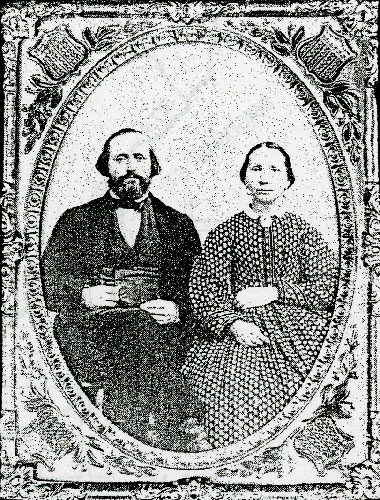
Fig. 1. An 1853 daguerrotype of Erastus F. and Elizabeth A. Snow, the Kanes’ main hosts. (Courtesy LDS Church Archives) The Snows sent the Mexican bird shown on the front cover as a postcard. (Courtesy L. Tom Perry Special Collections, HBLL, BYU)
Any bird’s-eye survey depends first of all on the type of bird viewing the scene. Were we to select a hawk hovering over Black Ridge or Sugar Loaf, we would undoubtedly get a different view of the town than if we picked a blackbird perched in a cottonwood tree. During the Kanes’ stay in St. George there were so many birds flying about that their young son Evan said, “the cottonwoods seem to have budded out in blackbirds.”6 Would we want to consider a low-flying quail for a ground-level look? Or should we adopt the Snow to their daughter Florence7 for an outsider’s take on St. George’s townscape?
Variations in views should remind us of a basic geographical axiom implicit in the subtitle of A History of Washington County prepared by Professors Alder and Brooks — From Isolation to Destination8 or, to alter it slightly, “From Desolate Isolation to Balmy Destination.” The climate and topography of this area have changed little over the past 150 years, but Utahns’ perceptions of Dixie have changed greatly, due in part, of course, to the new amenity called air-conditioning. Even in the 19th century, as Paul Reeve’s dissertation so effectively demonstrates9, Paiutes, Mormons, and Miners viewed the same territory through contrasting cultural lenses that led to frequent conflicts among them. Thus one could argue that the environment perceived, more than the environment per se, has determined the cultural landscape characteristic of St. George, no matter what the time period.
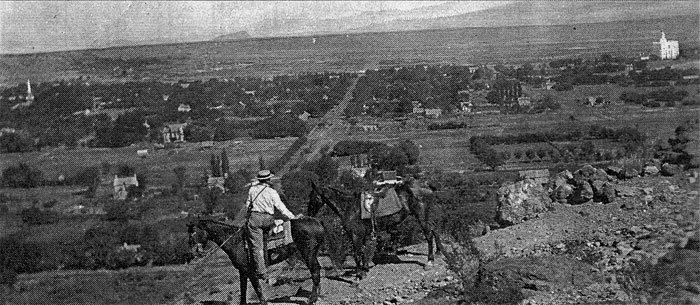
Fig. 2. St. George as viewed from the western Black Ridge, c. 1910. (Courtesy Utah State Historical Society)
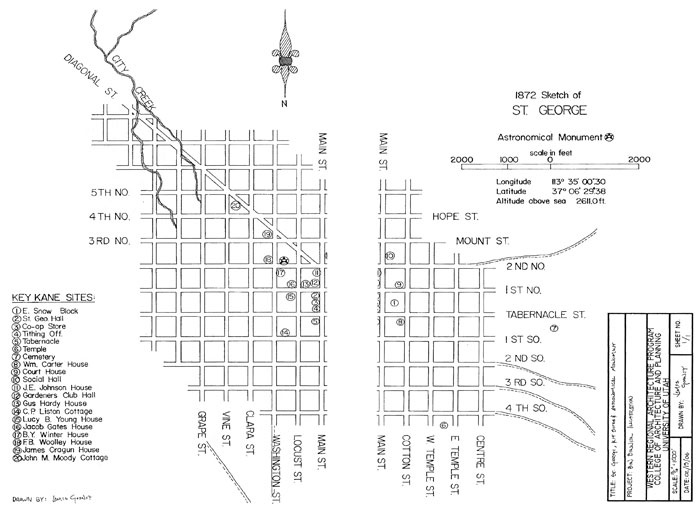
Fig. 3. Based on the “Astronomical Monument” map issued by the U.S. Army in 1872 (and copied by the Utah State Historical Society for the front cover), this map locates many of the sites visited by the Kanes.
If we could agree on which kind of bird has the ideal vantage point, we would still have to decide on just when we wanted to view the town during Erastus Snow’s long tenure (1861-88) as the chief leader of the community. One drawback inherent in the “Pioneer Map,” or any such map for that matter, is that it does not capture the dynamic distribution of the Pioneers, even within the city, or the ongoing changes in their built and cultivated environment. No one has described the difficulty of persuading Dixie settlers not to leave the land better than President John Taylor, speaking in this Tabernacle 20 years after the founding of St. George. He expressed sympathy for the repeated efforts of the corpulent but energetic Apostle George A. Smith to bring settlers to the Southern Utah Mission.
By the time he came down [from Northern Utah] again, he would find half of the [original] others had gone…. They thought the land was set up on edge and had never been finished…. Then he would return to the city, and drum up a few more recruits, and take them down; and by the time he got here [again] he would find that a good many of those he [last] left had also gone. Finally, they became weeded out … until he got a lot of folks who, if they had considered it a duty to go on to a barren rock, and stay there until they should be instructed to leave, would have done it.10
Ten years before Taylor’s talk, Smith offered his own assessment of St. George (along with an eagle’s-eye view of its setting), one that contained no hint of the discouragement he had experienced in getting Dixie settlers to stay.
The town … is orderly, public improvements going ahead rapidly; it is almost a wonder by what magic hand so fine a City could in so short a time, spring up in a desert. Between two of these high ridges [“crested with black volcanic rocks”], one on the East and the other to the West, bordered on the North with high decomposing cliffs of old red sandstone, lies the beautiful town of St. George, where, nine years ago was only a sandy spot of mineral ground, watered by a few brackish springs and which produces grape vines of a hundred varieties and many other choice fruits, a great variety of wines, almost every man having his vineyard, and the country around so desert as to cause travelers to wonder what could have induced any people to build amid such a desolation.11
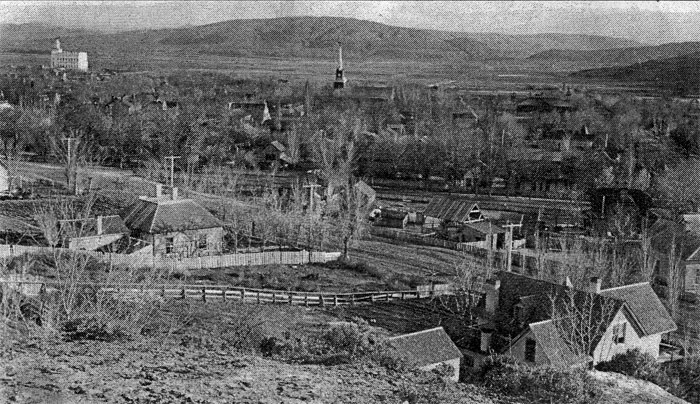
Fig. 4. A closer bird’s-eye view of St. George taken from the north side, c. 1910. (Courtesy Utah State Historical Society)
For closer bird’s-eye views of St. George, I have drawn from many sources but mainly from two that reflect my bifocal lenses and interests as a historical geographer. The first is Elizabeth Kane’s A Gentile Account, one that would probably impress Juanita Brooks because it’s so perceptive and written by an outsider whose “particular interests were the geography and geology, and, of course, Mormons and Mormonism, especially the lives and roles of women.”12 The second source I uncovered through the aid of my older host, Elder Alder. He directed me to St. George’s City Council Minutes first for 1862-72 and then for 1877-88. They may seem like a mundane and terribly tedious record to read, but they paint a quail’s-eye picture of the place for all but five years of Erastus Snow’s reign. The five-year gap in extant Minutes I filled in with James G. Bleak’s indispensable Annals of the Southern Utah Mission. Unlike Box Elder County, centered on Lorenzo Snow’s Brigham City, Dixie had an official historian, a meticulous Englishman who somehow kept track of almost every happening even while clerking for several organizations, serving in a bishopric or stake presidency, and directing three households.
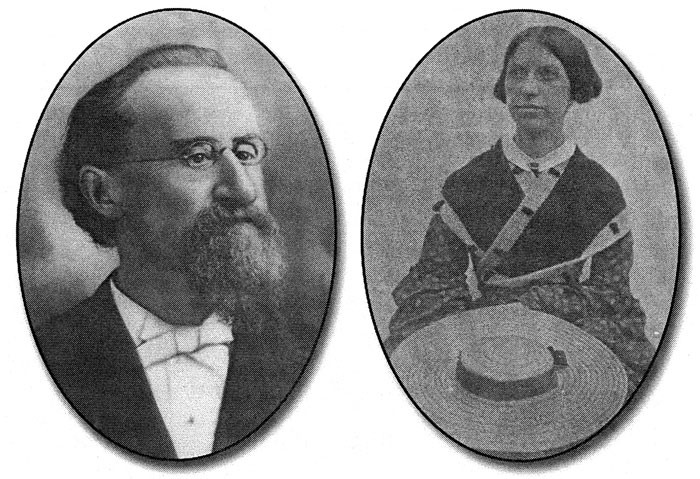
Fig. 5. Two key viewers of St. George: Elizabeth Kane, age 22 (right) and James G. Bleak, unknown age (left). (Courtesy of the L. Tom Perry Special Collections, HBLL, BYU, and Lynne Clark Collection, donor: DUP, respectively)
Elizabeth Kane’s Photographic Eye
Coming from England and Pennsylvania, Mrs. Kane viewed the Mormon villages she saw with Eastern eyes and described them differently than inside observers like George A. Smith. En route to Provo, after her party stopped in American Fork to water the horses and taste Bishop Harrington’s “delicious apples,” she drew this concise comparison with her Pennsylvania towns. “These Mormon villages have such wide streets and every house is so set about with trees that they look like a bouquet arranged by an artist in a vase, each spray of flower and leaf disposed to show its beauties instead of the close-set masses of the florist….”13
Kane’s descriptions of St. George make the town sound like a semitropical American Fork with no sign of an intruding narrow gauge railroad. “The ‘streets,’ ” … she wrote, “are smoothly graded wide lanes, water murmurs along the edges of all the side paths, which are overhung with trees; vineyards and orchards surround the houses….” Then she “peoples” the streets and squares with her descriptions of evening and after-church scenes. “At sunset we heard the cowherd’s long tin horn, and went out [of the Snows’ Big House, where they lodged] to see the Town troop of cows come home. The great drove halted in the central square, and then each cow walked slowly toward her owner’s home. The people were throwing open the doors of sheds, and [the] gates of little paddocks in which the milky mothers were to spend the night.” On Sunday afternoon no cows were around. “The Plaza and the Tithing Yard were filled with wagons when we emerged [from the Tabernacle], and nothing could be more [like] Bucks County [Pennsylvania] than the conduct and appearance of the respectable farmer-folk … as they took their [wagon] seats and exchanged cordial greetings before dispersing.”13
Elizabeth Kane, only 36 years old at the time, loved to wander through town with her husband and/or their two young sons (ages 9 and 11), walks combined with planned visits to new friends or interrupted by chance meetings with people out in their yards or in the streets. Her vivid accounts of these encounters illustrate the diversity of St. George’s population — about half U.S.-born, half foreign-born — and the variety of houses they had built after months of living in “dismounted wagon-bodies and tents.” By joining Thomas and her for a Sunday morning “stroll through the quiet ways, (one cannot call them streets,) of this large straggling village,” we can sample the varied origins of the town’s inhabitants as reflected in the vernacular architecture of their dwellings. In the vicinity of Diagonal Street, laid out along St. George’s little City Creek,
An old man joined us…as we passed a cottage which, but for its wide vine shaded piazza [porch] would have looked thoroughly English with its whitewashed rough-stone walls and deepset casement windows…On the opposite side of the road stood a cottage built Swiss fashion with a high overhanging piazza running round the second story, so that we could see the family gathered there in spite of the high hedge of mesquit[e] round the lot.
An old squaw now came forward bending under a heavy load of the yucca root, which they use here for soap. She turned aside, entering a gate in the wattle fence of a garden across the road. A very small adobe cottage stood in the midst of it, of which the old man who was talking to K. [Elizabeth’s reference to Tom] proved to be the owner. He bade us come in and showed us that he had a fine vineyard, a beautiful peach orchard and a few pomegranate almond and fig trees. He is a Southerner, and was glad to revive his memories of Alabama in chatting over old times to K [a Civil War veteran].14
Since the St. George census-taker in 1870 counted just four Alabama-born residents, only one of whom — at age 48 — could be considered old, we can safely conclude that the man with whom they chatted was John M. Moody, a farmer and one-time member of the City Council. His “little fertile oasis,” as Mrs. Kane would have termed it, included a second home for two of his three wives and all of his ten at-home children, judging by the census listing of two separate households. Just a block or so away from the Moody place the Kanes might have spotted a Southern-style house “pre-framed” in Pine Valley by James Cragun, who took a slower and longer road to Dixie in the summer of 1863. The autobiography of his daughter, Martha C. Cox, contains a brief but suggestive description of the house built by her Virginia-rooted father from southern Indiana.
The roof sloped down from the top over two porches one on the north and one on the south. The windows were narrow and supplied little light. During that first summer we lived in it with only the ends enclosed. We had times to be remembered when the wind blew hard and oh how the wind did blow…before there were trees for protection. But before the winter came my father closed in the sides and put glass in the doors to aid in the lighting…The house was anything but convenient…. [To make matters worse,] St. George was first infested by mice and rats and then by cats. My mother with our help tried hard [to] close up the great space underneath the house to keep the cats from using it for a battleground every night. But we never quite accomplished it. In Feb. the lot was cleared and trees and vines planted.15
On a weekday morning, the Kanes started out for “the top of the [Black Bench] mesa” but were soon stopped by Mrs. Lucy Young, Brigham’s St. George wife (or “Bigham Squaw,” as the Paiutes called her), who insisted on showing the boys how she watered her yard. Elizabeth describes the process so well that one can almost visualize it without the aid of a photograph.
At this time of year there is no limit to the time allowed for watering, but later, when the crops start, each lot has but three hours in the twenty four assigned to it … She has three, one of which is allowed to remain uncultivated, so that she has nine hours water time for the two lots … Her garden is the best looking in the village … From the acequia in the street, which runs very rapidly there are two troughs made of boards which traverse her lots…. At intervals there are ‘gates’ in the sides of the troughs … acting as valves which are kept closed by the pressure of the water.
Mrs. Lucy then showed the Kanes her grape arbour. “One long trellis runs back some distance from the house, and she had several thousand vine-cuttings in a bed ready to set out. She means to have a ‘pleached [plaited or interlaced] alley’ all round the lot.” In addition, her “wee Estate is planted with thriving peach, plum apricot and apple trees. Then she has another part set out with Luzerne that yields six crops a year.” What made Mrs. Lucy’s garden such a model for the village besides the fact that she had an English gardener to assist her? Her husband had bought the lot from a prominent merchant named Joseph Birch, who had hauled in “One thousand cart loads of sand, and two thousand of earth … to make the rich loam I [Elizabeth] saw, and fill up ‘the slough.’ ” Then the lot “was under-drained in every direction to carry off the water charged with ‘mineral’ that percolated through it…. She [Lucy] showed us a deep ditch running towards the Clara, carrying off the outflow from her lots. Into it the smaller drains discharged.”16
After the Kanes had inspected her garden, Mrs. Young, who “though at least forty has hardly a line of silver in her soft brown hair,” urged them to enter…
… her pretty buff-walled cottage, a compact and comfortable home for her very small family. The thick walls make it cool in summer, and the smallness of her bedrooms is unfelt, because she and the [three] little girls sleep under the vine trellis. Then she has a wee hall, a well furnished parlour and a large comfortable living room with a wood fire smouldering in the wide hearth before which her mother [old Mrs. Benbow] sat rocking herself.17
Susa Young Gates, in the biography she wrote of her mother nearly 60 years after the Kanes’ visit, makes the house sound a bit bigger than the cottage described by Elizabeth. In Susa’s eyes, it was built “in old New England style with a wide front porch, long windows in the front opening right onto the porch, a parlor, dining room, roomy pantry and kitchen, with back porch, one down-stairs bedroom, and three upstairs.” However, the home had one serious drawback: “the house cellar was apt to fill up with water, and the foundations became rotten very soon. Careless building it was,” at least in the eyes of the daughter of a master craftsman.18 Certainly the home was too small to accommodate any of the sizable groups that Brother Brigham brought with him whenever he wintered in St. George. The year after the Kanes’ departure he bought and then greatly enlarged another house still known as his Winter Home.
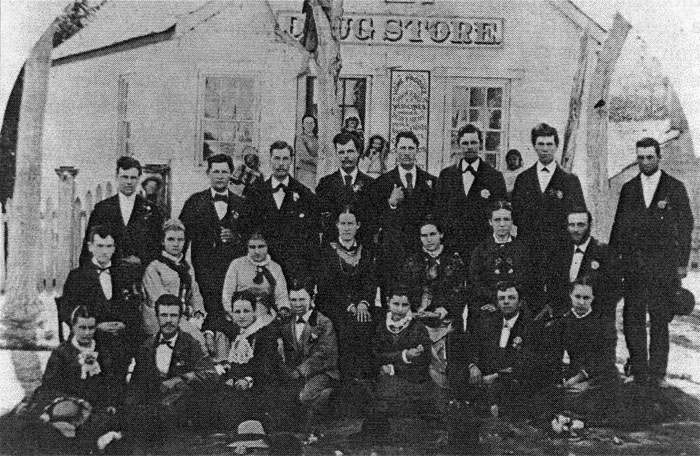
Fig. 6. Members of Gardeners’ (or Union?) Club in front of J.E. Johnson’s Drug Store in 1870s. (Courtesy Lynne Clark Collection, Agnes S. Pickett & Orpha Morris)
On the evening of their visit with Mrs. Lucy, the Kanes attended the Annual Festival of the St. George Gardeners’ Club, held in the club’s building on the same block that showcased another of the town’s most striking gardens — that of the group’s founder and president. Elizabeth was “amused by the number of countrywomen to whom I [she] was introduced.” The club “being composed of genuine practical gardeners, not dilettanti [dilettantes], of course the Scotch love of the art showed itself by their being present in force.” The tables and even “the deep window recesses of the room” were covered or piled high “with the products of Dixie….” “There were grapes gathered today [Jan.21] — having been sheltered by dampened matting; and grapes gathered in the autumn, a little dried but deliciously sweet.” Moreover, “There were several bottles of grape wine,” but placed there only as a courtesy to her husband, she assumed, for “the healths were all drunk in fair water.” The crowd cheered the final toast to “The health of the people of St George. May their cellars be full of wine, their barns full of plenty, their hearts full of freedom and their cradles full of babies!”19
In spite of the presence of a fair number of Scots, including Elizabeth’s good friends, the so-called “McDiarmids,” the town’s leading horticulturists were New Yorkers. Club President Joseph E. Johnson had moved to Dixie on his own initiative from an impressive Spring Lake Villa in Utah Valley because of his interest in raising more exotic plants than the northern climate allowed. The Gardeners’ Club may have included one or two Swiss as well as some Scots, for one square on the southwest side of town was known as the “Swiss Block,” located in the small LDS Second or Swiss Ward — a section the Kanes may not have seen.
However, one day they did drive out to see Santa Clara. “The village lay on either side of a broad brown road, the water gurgling briskly in the ‘ceqs’, (acequias), and each little house standing apart in its garden, half-buried in foliage. Altogether, the place had such a European look that I was not surprised to learn that the inhabitants are Swiss.” Elizabeth’s photographic eye caught sight of a stone house “perched high up on an isolated hill, and had rude stone terraces on which a vineyard was planted. The ground floor seemed to be tenanted by cattle, who gazed at us from the doorway as if they owned the place…. Below this house stretched vineyards, fields where the sorghum stubble stood, and cotton fields where my children eagerly picked some bolls that had been forgotten.”20 Given the intensity of Dixie’s largely subsistence agriculture, especially in the towns themselves, it should not surprise us that Santa Clara, St. George, and Washington were swarming with bees, birds, flies, and even mice, rats, and cats.
As early as the winter of 1870-71, Brigham Young took full advantage of Erastus Snow’s willingness to share his “Big House” with the President’s guests. One of them, Colonel Robert T. Burton21, was assigned the responsibility of taking charge of all these boarders until the party’s departure a month later, presumably to relieve Elder Snow’s four busy wives of the burden. When the “Kane Company” arrived two years later, the Big House had already become the town’s leading “Boarding House” — later officially licensed as the “St. George House.” All but one of Snow’s wives, Elizabeth by name, had moved out of this house, where the Kanes occupied a comfortable suite on the first floor, into separate and smaller but more private homes located on the same block.
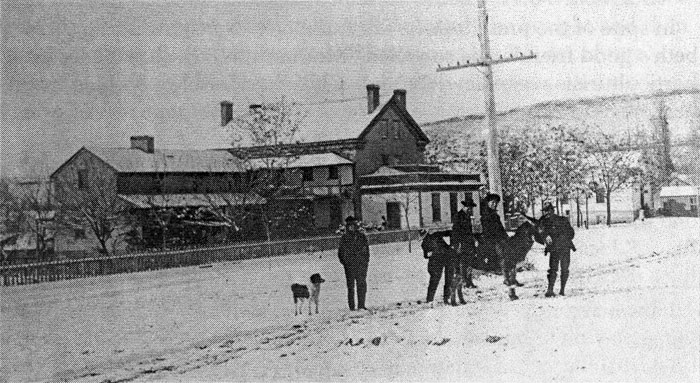
Fig. 7. Erastus Snow’s “St. George House” before it became “Dixie Hotel.” (Courtesy Utah State Historical Society)
Ironically, Mrs. Kane gives us a better picture of those houses, at least the almost identical ones belonging to Snow’s first two wives — Artimesia and Minerva — than she does of the “hotel” where most of Brother Brigham’s entourage found lodging. One afternoon Elder Snow “called to invite us to dine with one of his wives.” Unable to accept the invitation, which she assumed had come from Artimesia, Elizabeth let her son Willie “conduct me to her house. It is on the north side of the street [presumably First North]; a neat story and a half high adobe cottage. She received me in a pleasant room directly off the front piazza…. The windows were neatly draped with white curtains; there was a nice rag carpet on the floor, knitted mats before the door and fireplace, a lounge, rocking chair and sewing machine, while from the next room came the sound of some one practising on the melodeon.”
Before leaving, an embarrassed Mrs. Kane realized Artimesia was not the one who had extended the invitation. So “After lunch I went to see the right Mrs. [Minerva] Snow. Her house stands in the same garden-vineyard as our Mrs. [third wife Elizabeth] Snow’s and has a wide and lofty trellised arbour at the back. The house commands the same view as that of the wife I visited this morning, and is about the same size, and equally comfortably furnished….”22 Keeping the identity of Erastus Snow’s wives straight proved difficult for Elizabeth Kane because he never specified which wife when he said “my wife,” and she seldom, if ever, saw all four together.
The Kanes’ visit coincided with the ongoing construction of the Tabernacle in which we meet this evening. One Sunday afternoon, since workers were still “plastering the basement, the meeting was held in the immense empty church above. The great size of the dark red stone courses of the wall struck me in comparison with the slenderness and poor quality of the timbers.” However, “K. said that I would not think so ill of it if I had not been spoiled by the timber I see in our own lumber yards in the Allegheny Mountain[s]” of western Pennsylvania.23
Even more revealing than Elizabeth’s descriptions of the Tabernacle’s interior is the light her St. George Journal sheds on the siting of the Temple. More than a year before the Kanes’ sojourn in Dixie, Brigham Young had selected what seemed to some a questionable site on the south edge of town about a mile away from the center. According to Welshman Edward L. Parry, Young’s head mason, the center of the designated block (#27, Plat B) lay “a little elevated above its surroundings.” While the ground proved to be “dry and hard” for the top four or five feet, farther down it was “wet and soft,” as workers discovered right after Brother Brigham dedicated the site on Nov. 9, 1871.24
Even though the builders moved ahead and “laid the foundations of a temple,” apparently the rains of the following winter had “undermined them” enough that the Saints’ pragmatic leader had second thoughts about the site. Briefly at least, while the Kanes were with him, Brigham Young did indeed consider alternative locations. Accompanied by Major General Kane and other members of his party, he visited the same “Black Bench” from where men were hauling volcanic rock to pound into the boggy ground for the base of the temple. But there on the Black Ridge “the want of water setsthem against it” as a site, wrote Mrs. Kane. She and her husband thought the people favored “building [the temple] at the head of this [Main] street, where there is a sort of terrace below the Sugar Loaf Bluff. They call it Mt. Hope,” though she would have renamed it “Mount Despair.” Presumably that was where, ten years earlier, Young himself had expressed a desire “to obtain the mound North of St. George with a few acres around it, possibly with a temple site in mind. Then in 1864 Elder Snow obtained from the City Council for $100 permission to use “the Water rising on the Little Bench near the head of Main Street….” But they attached a key restriction — “Provided that so long as needed for domestic use the said waters shall be permitted to flow down the East side of Main Street at least three hours each morning.”24 In President Young’s eyes, perhaps that terrace on the steep slope of Mount Hope was too narrow or too limited by its sandstone base to be a suitable place for the temple.
One day, when her husband drove over to visit the Washington Cotton Factory, Mrs. Kane took her sons for a long walk down an alkali-covered road to see what she termed “the abandoned site of the Temple. The trenches of the excavation have about eighteen inches… of alkaline water in them….” However, she “could not understand why the [so-called] ‘Mineral’ … should make it necessary to build the temple elsewhere, as it seemed to me that there was fall enough from the [elevated] site to carry the water off by ditches.” But someone then explained to her how the alkali was already eating into the sandstone walls of many houses and even the unfinished Tabernacle.25
In spite of the deleterious effects of the saleratus, President Young seemingly agreed with Elizabeth Kane that St. George should not abandon the alkaline site. Shortly before returning to Salt Lake, he told a congregation in the Tabernacle that “he had diligently sought of the Lord to know the right location for this Temple, and he was well satisfied that the place at first selected was the right place.” He added that “the plan on which he would have a good foundation built, is to dig trenches, fill them with small volcanic rock and pound it down with a cast iron hammer, or commonly called, piledriver.” Well aware of the drainage problems that his wife Lucy Bigelow was having with the cellar in her house, Young advised everyone “in building their foundations, [to] pound down small black rock, and build their cellars on top of the ground instead of going below the surface.”26
Although the President clearly patterned the St. George Temple after the “modern Gothick” (Parry’s term) style of the larger Salt Lake Temple, he decided against siting it in the already built-up center of town, on the precarious slope of Mt. Hope, or atop the arid Black Ridge. In Logan and Manti he also selected temple sites outside the then inhabited city. But in each of those cases he located them on what his successor John Taylor termed “a very imposing position” above the settlement.27 The Logan/Manti sites and that of the centrally placed Salt Lake Temple make the St. George Temple’s position seem incongruous. However, the hill above Manti took as much time and effort to prepare as the slightly elevated but swampy mound south of this town. Perhaps Young would have preferred a more central or commanding site for Dixie’s temple, but by then, if ever, Mormon cosmology did not require a specific kind of space for a sacred edifice. As an experienced builder, the pragmatic President figured out a way to make an alkaline mound located outside of town work remarkably well.
St. George as Seen and Shaped by its City Council
By April 1862, St. George had a fully functioning City Council consisting of a mayor, two aldermen, two councilors (later four) and several other officers ranging from recorder to sexton. The Council, elected every two years, met at least twice a month, usually on Saturdays, providing enough members showed up to form a Quorum. They functioned in formal fashion, voting on all bills or issues brought before the group and often forming committees to investigate matters that required further study. For convenience sake, one could summarize the Council’s concerns and actions under the names of the three-man Standing Committees created at an early date: Claims & Appropriations, Ordinances, Drainage & Streets, Public Grounds & Improvements, Sanitary Affairs, Water Works and Water Rights. The only catch is that the first two were tied to most Council actions, which required not only funding but often an ordinance.
Space and time limit me to summarizing the Council’s role in shaping the character and townscape of St. George. Claims and Appropriations tend to dominate the minutes, since the Council received bills for every conceivable item or undertaking, from instruments for the Brass Band to fencing the City Cemetery. What surprised me more than the kinds of allocations was the array of currencies accepted. For instance, the City might engage an Aaron Nelson “to grade 2nd North Street by cutting through 19 hills and filling the hollows as far as the dirt would go” but then pay him with four different scrips: Washington Factory, Canaan Co-op, Co-op Store, and City.28
The Council must have passed hundreds of ordinances designed to order and protect the lives of citizens. None, it seems, was revised more often than the one related to alcoholic beverages. At the same meeting in which the Council decided to design a “St. George City Seal” centered about “a cluster of grapes,” it agreed to ask the County Court “for the exclusive right to manufacture and sell spirituous liquors.” Apostle Snow, whom the Council consulted on this and most major matters, advised against the use of grain. “He believed that the skimmings [sic] of the Sugar Cane would make enough whisky to supply the reasonable wants of Washington, Iron and Beaver Counties.” For many years the City employed a Liquor Agent, who was authorized in 1877 to move the Liquor Store from the basement into the southeast corner room on the mainfloor of the Courthouse. Eventually the Council revised the ordinance to prohibit “giving away wine…to those who are liable to get intoxicated thereby.”29
If this kind of business seems out of character for a Mormon St. George, one should try to compare the taste of 19th-century Dixie wine with that of Dixie water. The homemade wine that one of Mrs. Kane’s friends offered her tasted “horrid,” but for husband Tom “the best wine made here is the one I like least.” However, she added, “at Tocquer a Swiss [probably Conrad Naegle, a vintner with seven wives] makes a [burgundy-type] wine that I like.” Elizabeth probably still preferred most of the poorer local wines to the water St. George residents had to drink, impregnated as it was with that bitter-tasting alkali. A decade later an LDS visitor from Payson, who had brought an ailing first wife to Dixie for her health and to attend the temple, rejoiced when he reached Beaver on their return trip. “It seems [so] nice to get good cold water to drink once more, the water at St. George being so warm and disagreeable that I was thirsty all the time I was there.”30
As early as 1868, the Ordinances Committee “was instructed to make and present an Ordinance naming the Streets of the City.” If they acted, only the streets running east and west were named in conventional fashion, from 4th North to 4th South on either side of Tabernacle Street (see “1872 Sketch of St. George”). Not until 1877, when the City finally published a map surveyed by John M. Macfarlane, were all “the streets running north-south” on either side of Main Street and the “short streets on or near Mount Hope” officially named. By then, the City extended from Bluff on the west to Ridge (now 10th East) on the east with most of the streets in between given the names of plants, rivers, or trees. I doubt that any Dixie person still living remember the names Grape, Vine, Clara, Washington, Locust, Cotton, West Temple, East Temple, Centre Ave., Maple, Mulberry, Elm, Walnut, Chestnut, Magnolia, Palm, Rio Virgen Ave., Orange, Olive.”31 By 1904, those folksy names had yielded to the formal East-West names.
The Drains Committee’s first assignment was “to drain [the] west part of the City” with two main drains. Residents could, if they wished, locate sub-ditches at their own expense.32 Why drain the west — rather than the eastside? The west part of town had to contend with the irregular flow of City Creek, a task compounded by occasional floods and the effects of upstream water-users like the distillery, two mills, and a tannery. In time, the work of the Drains Committee became inseparably connected with the annual or oftener cleaning of ditches and the grading and so-called “turnpiking” of streets. Nowhere did that work prove more challenging than along Diagonal Street and at its convergence with Main Street — the center of the city’s tiny business district. After straightening out Diagonal Street and adjusting property lines at considerable expense, they hired a crew to build a deep rock-lined irrigation ditch along the northeast side of that singular street cutting across the St. George grid.
The Public Grounds & Improvement Committee, as its name implies, assumed the responsibility of identifying and then improving public spaces, most importantly the “Public Square,” which Elizabeth Kane placed just north of the Tabernacle with the Tithing Yard. The Public Grounds Committee took charge of “putting up 64 rods of fence around the Public Square similar to that around the Tabernacle lots….The fence [was] to include three carriage gates and four pedestrian gates.” Perhaps motivated by that improvement, the following year Richard Bentley asked the Council for use of the City’s “Lone Tree Spring,” so the County could fence and beautify “the grounds around the Court House.”33
As early as 1864 the Council had asked two of its members “to consult President Snow as to the most suitable site for a County Court House and also for a City Hall.” They found one for the former but not for the latter. After meeting in sundry places such as Snow’s office or the mayor’s home, the Council finally negotiated an agreement with the Gardeners’ Club to use their hall. On the eve of Brigham Young’s 1870-71 visit, the Council decided the City needed a “Special Police” to check “rowdyism” and to protect the President. So they arranged with the Gardeners to have their increasingly functional Hall fitted up as a Police Headquarters.34
One can begin to imagine the role of the Sanitary Affairs Committee even without fully appreciating the unpleasant nature of their and the City Marshal’s assignments. Someone’s flock of sheep moving inside the City Limits and “fouling” the water in the main West Ditch had to be driven out. Or citizens living near the Canaan Co-op’s Meat Market might rightfully complain about its “very unhealthful and unclean condition” and insist upon action to clean up or close down that operation. On one occasion the Council ordered the marshal to remove “the corrals belonging to J. E. Johnson situated at the intersection of Main and 3rd North Streets. Also that the Bee hives near [his] north fence and the Building which encroaches upon the side walk are hereby declared nuisances and ordered abated.” Obviously opposed to the town’s offensive odors, Elder Snow during his term as a City Councilman asked the Sanitary Committee to draft a new Ordinance “relating to Corralls and Outhouses.”35
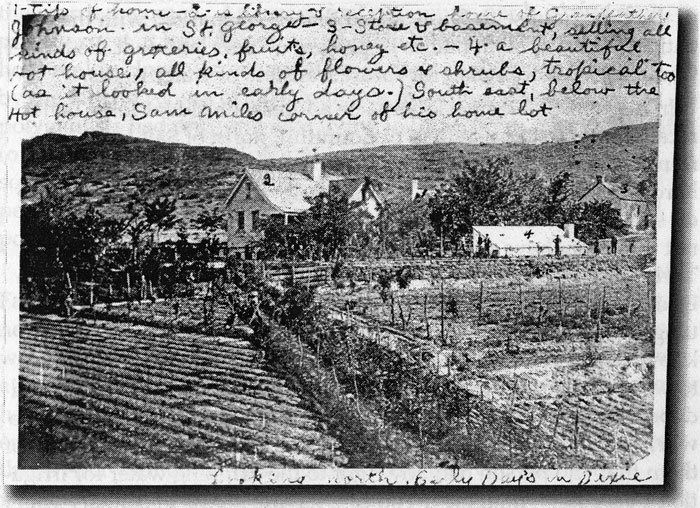
Fig. 9. Joseph E. Johnson’s crowded lot, c. 1880, reflects his busy life as apiarist, horticulturist, librarian, merchant, printer, etc. (Courtesy Lynne Clark Collection, donor: Orpha Morris)
Why have I saved the Water Works & Water Rights Committee for last? Because as any Dixie resident knows all too well, water was (and is) the single most important issue facing this region (and the only one to which Alder and Brooks devote an entire chapter in their History of Washington County). The Committee encouraged any number of measures that might increase the water supply — from digging more wells and cleaning out the local springs to tapping “the tail race of the cotton factory” in Washington.36 Regulating the water, once obtained, proved almost as vexing as finding it. The City’s water masters had to channel it from the primary East and West Springs into the East and West Ditches crossing the north end of town. They then diverted the water into the streets running from north to south. Finally, as in 1878, they had to divide 102 cubic inches among 257 West Division Lots and 60 cubic inches among 114 East Division Lots.37 A map depicting the distribution of ditches, culverts, bridges, and lots entitled to water would save anyone describing the system at least a thousand words. In fact, not long after Surveyor J. M. Macfarlane had finished the first Official Map of the City, Counselor Snow asked that it “be marked with the lots entitled to water with names of present owners, and that the [Water] Committee report a plan for future transfers of water rights.”38
In his 1881 St. George Tabernacle address, President John Taylor recalled the first few settlers of Bountiful, north of Salt Lake, who found “there was not enough water [there], and that they could hardly get along. They got to quarreling about water rights, as we do sometimes. I do not know of much quarreling down here; I do not think you have as much water to quarrel over as they had.”39 Taylor was right about how little water the City had, but that gave Dixie denizens all the more reason to quarrel. Perhaps he had his tongue-in-cheek when he spoke, for as President he must have known that even Church and City officials sometimes bickered as to which water source the Temple’s Trustees should tap to ensure a dependable supply.40 City residents had more frequent occasion to worry about their water rights. The Council had to remind some of them that “no person had any right to the drinking water for irrigation purposes.” Imagine if you can, having access to culinary water for just an hour or so at the same time each morning.41
Even an acute observer like Elizabeth Kane would have found it difficult to describe and interpret the intricacies of St. George’s water system without the benefit of a detailed map like the one the City Council requested. But that, of course, was not her interest. She undoubtedly would have preferred a map showing the distribution of the town’s plural families and the lots they occupied. After all, she had agreed to spend a winter in Utah mainly because of her interest in the Mormon marriage system and in spite of her strong aversion to it. As a self-styled “anti-polygamy interviewer,” she declined to write about the intriguing Lion House in Salt Lake, feeling that the Young family had “already suffered enough from the prying curiosity of strangers.”42 In St. George, however, Elizabeth found herself in an isolated place well suited for discretely observing and informally interviewing polygamists, if only because so many of its residents had embraced the so-called “Principle of Plurality.”
Insights from Mrs. Kane’s Interviews
As early as 1867, the City took a census of its married men and discovered that 69 of its 172 married men — or 40 percent — were polygamists.43 Unfortunately no count was made of the status of the married women. Assuming just two wives per husband, one might expect at least 80 percent of them to have lived in a plural household. However, examination of the population recorded by the federal census of 1870 indicates that quite a number of the polygamists had only one wife living in St. George. The other wife (or wives) resided in a different Dixie town, Salt Lake, Provo, or some distant place such as Panguitch. Thus perhaps only about 60 percent of the city’s married women in 1867 would have claimed a polygamist as a husband.
Judging by careful calculations based on the 1870 census and LDS Family Group Records44, those percentages dropped a bit during the next three years. Then only about 60 of the city’s 200 households were headed by polygamists or their wives, but they accounted for at least 45 percent of the total population. Some plural families may have moved elsewhere before the census was taken, though others who arrived after 1870 to work on the temple in effect replaced them. And younger men like Henry Eyring or Charles Walker waited until the 1870s or even later to multiply their families.45 The census-taker failed to count William G. Perkins (and his two wives), who gave both of the Kanes a patriarchal blessing before their departure. For whatever reasons, he probably missed other families, too, monogamous as well as polygamous.
Whatever the exact figures, Elizabeth Kane could not have complained about a scarcity of “plural” people to “interview.” After all, Brother Brigham’s entire entourage, with the exception of his servants, consisted of persons living the Celestial Order of Marriage, all of whom she mentions from time to time in her travel diaries. “Mrs. A.,” for instance, was the President’s so-called “favorite wife” Amelia Folsom, who, without any children of her own, was free to accompany him on many of his trips. Brigham’s brother Lorenzo brought his Welsh wife “Mrs. Jane;” and Bishop A. Milton Mussercame with his “Silent Woman.” Salt Lake’s Bishop Sheets and William C. Staines, the Kanes’ popular “Chief of Staff,” left their wives at home but certainly could have served as male informants for Elizabeth. St. George’s singing blacksmith, David H. Cannon, or its choirmaster, John M. Macfarlane, each of whom she mentions more than once, presumably also would have responded to her questions. But she clearly felt more comfortable with the women and spoke intimately with several of them about various facets of plural living. They are the ones whose stories I shall selectively try to capsulate.
The first lady Elizabeth interviewed in depth she referred to as “Louisa,” the wife of a “Mr. Johns,” whose identity I am unsure of in spite of the many clues given. Probably born during her parents’ flight from Far West, Missouri, she herself had already had eleven children, the oldest one (“Mary”) only 16 and attending college in Salt Lake, where Louisa’s well-to-do parents lived. A younger daughter suffered from “the terrible sore-eyes of Southern Utah,” and another named “Lulu” had become too spoiled to help with housework after spending six months with an “Aunt Annie” who had but two children. The past summer, the Johns family had barely managed “to put up a saw-mill” that must have benefited from being near “the great mining region of Pioche in Nevada.” Mrs. Johns’ “devotion to her husband, the number of their children and their poverty had made me [Elizabeth] suppose Louisa an only wife” until she learned that “Aunt Annie” was the “first and oldest wife.”46
Mrs. Kane sympathized with the Johns’ hard life. But she also wondered why so many such families failed to follow the Mormon theory that polygamy was “better for the physical health of mothers and infants” if the wives lived apart from their husbands “during pregnancy and lactation.” Wanting to know “why some one had not counselled with Brother Johns for Louisa’s benefit,” Mrs. Kane went to see Mrs. Lange, “a spectacled woman of sixty or so; stout, shrewd and hard-headed as Susan Anthony herself.” She found not one but two Mrs. Langes, both examining “their joint husband’s clothes … to put them in order before he went on a mission.”47 Busy as they were, Elizabeth got no answer to the question that concerned her so.
She had even more difficulty in imagining how any first wife could give her husband to the new one, especially in the case of her good friend “little Mrs. McDiarmid,” who attended the Gardeners’ Annual Festival “with her handsome brave looking giant of a husband.” The McDiarmids were, in fact, Alexander F. and Maggie Macdonald, the first LDS converts in Perth, Scotland. Until that evening Mrs. Kane “had fancied that she was an only wife” and was astonished to learn that “He [“Hugh”] has had five, but one is dead.” Then Elizabeth asked whether women were happier “where all the wives lived together in one house, or each by herself?” Maggie replied that in her experience “they were happier together.” And “Is the first wife … looked upon as head of the family? Oh yes,” Maggie replied, “in all well-governed families,” but of course the husband “must govern his wives properly.”48
The Macdonalds had accepted Brother Brigham’s call to leave Provo and superintend the building of the St. George Temple. For Maggie and maybe her sister-wives that would mean taking charge of the “Big House” once Elizabeth Snow moved out and it became a boarding house for construction workers. In contrast to the seemingly happy plural lives of the Macdonalds, Mrs. Kane, at her husband’s suggestion, related a contrasting kind of Mormon love story. She told the not uncommon tale of a polygamist she had met in “a Gentile house,” presumably in Salt Lake, who thereafter neglected his first two wives, in spite of Church censure, after converting and marrying a young woman whom he met on his mission.49
Clearly each family experienced polygamy somewhat differently, judging from just three of Elizabeth Kane’s casual encounters with St. George’s plural population. The only intoxicated Mormon she met in Utah told her, “I was raised a sailor, and as you see I take too much sperrits. But don’t think the rest of the Saints is like me! I’ve got two as good wives.” How many of St. George’s polygamous wives had to put up with husbands who liked Dixie wine a little too much?50
Other plural wives, especially those much younger than their husbands, often had to cope with widowhood prematurely. One widow, only 20 when Indians killed her husband out on the Mojave Desert in 1869, was the daughter of Erastus and Artimesia Snow and named after her mother. Elizabeth described her as “a slender, dark complexioned woman…youthful enough to be quite a belle in the homely society here.” She was equally impressed with the young woman’s house, “a pretty white villa, standing in neatly kept grounds…surrounded by a low wall of volcanic tufa coped with red sandstone.” Mrs. Kane may not have known that she still shared that home with Frank D. Woolley’s older first wife, but she probably would not have been surprised to see Artimesia become the plural wife of Daniel Seegmiller just two months later.51 The Kanes also became acquainted with a Mrs. Mary G, an older sister of Erastus Snow, who married Jacob Gates just before they joined the LDS Church in their hometown of St. Johnsbury, Vermont, in 1833. Late one night the planet “Venus shone above the black basal hill with an intensity that made me [Elizabeth] wish her worshiper old Sister G. could see her.” Thomas Kane, upon returning from getting water, reported that “Every light in the village was extinguished, but Sister G.[,] late as it was, was prowling about in the moonlight lost in admiration of the stars, and had obliged him to give her a lesson in astronomy then and there. A curious fancy in a woman nearer seventy than sixty!”52
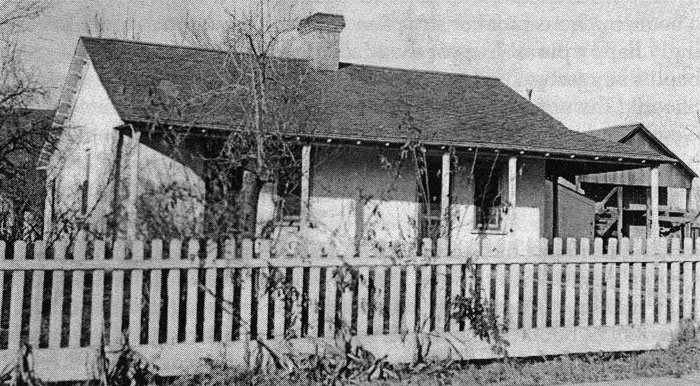
Fig. 10. As of 1870, Jacob Gates’ one-story adobe with two front doors housed all three wives, but it became Emma’s only when he placed the other two in separate homes. (Courtesy Utah State Historical Society)
As of the 1870 census, Jacob Gates, already a prominent civic and church leader, lived in a modest house with his three wives — Mary Minerva (only 56 years old), Emma (39), and Mary Ware (26) — and six children (15 to 1), just a block away from his brother-in-law’s Big House. The strained relationship of the two younger wives and the eccentric and childless first wife prompted Jacob to separate the three. For the younger Mary, he built a two-story adobe in the Dixie hamlet of Bellevue (renamed Pintura), where the Kanes stayed on their way to and from St. George. Emma could not abide living with the older Mary, for whom he had to find a separate place. In a letter written to Snow in 1885 in response to the apostle’s chiding him for not taking better care of this burdensome wife, Gates, then nearly 75 and residing in Provo, vented his pent-up feelings.
As for my wife Mary living with Emma, if I wished to bring Emma to an untimely end, it could soon be done by placing Aunt Mary in the house with her. Emma lived with her once and it came very near being her ruin….She deserves a better fate. Now as to my ability to assist…Mary, I will say that I was sent to St. George by your influence. I threw my whole wate [wad] to settle and develop the resources of the country and it has settled me financially….You tell me to ask for means and it shall be given. Then I ask that your sister Mary draw her support from the tithing office…I remained there until I became old and worn out and no longer able to work in water ditches and then worked in the Temple and boarded myself while others lived fat from the publick crib….What would your sircumstances be today if your necessities was not supplied from the Church fund? As one said of old, it is a land that eats up the people.53
Near the end of the Kanes’ stay in St. George, Elizabeth and her sons “climbed a little way up” the Black Ridge before pausing to rest. “While Evan tried to sketch the town” (a final bird’s-eye view?) and “Willie rambled about gathering leaves,” Mrs. Kane “could not help mourning for the Mormon women down on [in?] the houses of St. George,” extremely grateful to those who had befriended her ailing husband and her sons in so many ways. She even found herself feeling kindly towards Brother Brigham after having despised him “for this Slough of Polygamy in which he is so entangled!”54 But after associating with so many of St. George’s plural wives and observing such tangled lives, her aversion to polygamy did not diminish. At a final banquet held by the Relief Society in the Kanes’ honor, Elizabeth expressed her pleasure at seeing a “Brother Hawkins sitting quietly beside his old wife. It looked much more fitting than to see his wrinkled face and lantern jaws beside his younger wives’ rosy cheeks.”55
One cannot help but wonder what Elizabeth Kane would have thought of St. George and Mormon polygamy could she have returned to Utah at the time of Erastus Snow’s passing, which occurred while he was on the “Underground” about two years after the decade of federal raids had begun. He, like a surprising number of his fellow Dixie polygamists, succeeded in escaping imprisonment. Often they received timely telegraphs from the mining town of Silver Reef warning them that deputy marshals were headed for St. George. In spite of the city’s large number of polygamists, the marshals failed more often than not to arrest them.56 Of course, many of the plural families had slipped over the border into Nevada or Arizona or moved all the way to Chihuahua, Mexico, sometimes with the encouragement of Elder Snow. Ironically, at the same time a few prominent northern polygamists like Benjamin F. Johnson and Apostle Wilford Woodruff found temporary refuge in Utah’s isolated first temple town — in the temple itself, in Brigham Young’s winter home, or on William Atkin’s farm along the Rio Virgin.
The general disruption and dispersal of St. George’s plural families must have changed the city so much that Elizabeth Kane would have felt disoriented had she returned in the late 1880s. Even more than in 1872-73, she probably would have underscored the independence of Mormon women. “So many of them seem to have the entire management, not only of their families, but of their households and even outside business affairs, as if they were widows.”57 By 1888, many of the plural spouses Mrs. Kane had known, including Erastus Snow’s three surviving wives, had become actual widows. Even those women who had not lost their husbands relied more than ever on their own resources and sister-wives. Some of them, as clearly evident in the case of Isaiah Cox’s first three wives, became increasingly estranged from their spouse.58 While “lavishing labor for too trifling a return,”59 the self-reliance and resilience of that first generation of St. George Saints enabled the city to survive. Only one advantage did they have in the mind of President John Taylor — “no one will want to steal away your place from you; will they?” His Tabernacle audience laughed, undoubtedly encouraged by his recognition and appreciation of their untiring efforts. Let me conclude with his tribute to them.
What Brother Snow said here, referring to the sad fact of there being such a number of widows in this place whose husbands had gone to their graves through having worked themselves to death, was perfectly true; but, then, we don’t want to cry about it. We may as well laugh as cry about the past…In coming down from Pine Valley we found immense dugways in the most forbidding places, and it has required all the perseverance, energy, intelligence and faith of even those men [and women] who were capable of living on a dry rock — it required the combined energy of the whole to accomplish these things, and a good deal of faith too.60
Endnotes
- This lecture was subsequently published in the Utah Historical Quarterly: 45 (Spring 1979): 311-27.
- For a full account of his seasonal sojourns in Dixie, see the Bennion Family History (Salt Lake City: Bennion Family Association, 1990), Vol. IV, Chap. 4.
- Compare the new edition of Elizabeth W. Kane’s Twelve Mormon Homes (Salt Lake City: University of Utah Tanner Trust Fund, 1975) with A Gentile Account of Life in Utah’s Dixie, 1872-73 (Salt Lake City, University of Utah Tanner Trust Fund, 1995), hereafter cited as A Gentile Account.
- Polygamy in Lorenzo Snow’s Brigham City: An Architectural Tour was published in 2005 by the University of Utah as Publication No. 10 of the Western Regional Architecture Program, College of Architecture and Planning. Professor Tom Carter and History Graduate Student Alan L. Morrell were my co-authors. Architect Jack Brady and five graduate students of the College of Architecture and Planning served as indispensable partners in the project.
- Jennifer L. Lund and Emily Utt are the two women who showed us the St. George Model cast by artist Gale Hammond and who facilitated our research by sharing with us their own. Emily undertook the painstaking task of trying to locate all of the homes and other buildings in St. George as of 1886. J. Clifton Spendlove, co-author with Lund of “A Guide to Salt Lake City in 1870,” an unpublished manuscript completed in September 1997 for the Museum of Church History and Art, is the one who alerted me to the St. George model.
- A Gentile Account, p. 5.
- The Snows sent the card on Oct. 28, 1886; it’s found in the Franklin B. Woolley-Erastus Snow Family Collection, located in BYU’s HBLL Special Collections, MSS P-60, Box 2, Fd. 7.
- A 2nd edition of this fine history, published by the Zion National Park Natural History Association, will appear later this year.
- W. Paul Reeve, “Mormons, Miners, and Southern Paiutes: Making Space on the Nineteenth-Century Western Frontier, Ph.D. dissertation, Dept. of History, University of Utah, May 2002. The University of Illinois Press is scheduled to publish the thesis in revised form later this year. See also Nancy Ann Sessions Rohde, “Environmental Images of Utah’s Dixie, 1847-1880,” M.S. Thesis, Dept. of Geography, University of Utah, June 1884.
- Journal of Discourses, Vol. 23, Nov. 9, 1881.
- Taken from George A. Smith’s Jan. 5, 1871, letter to John Jacques, one of Brigham Young’s clerks in Salt Lake, and copied in the James G. Bleak Diaries, MS 1691, BYU, HBLL Special Collections, Box 1, Fd. 1, under that date.
- Taken from Mary Karen Bowen Solomon’s “Profile of Elizabeth Kane” in A Gentile Account, p. xviii.
- A Gentile Account, pp. 4-5, 22, 32.
- Ibid., pp. 56-57.
- “Autobiography of Martha Cragun Cox,” LDS Church Archives, MS 1661, pp. 84-85.
- A Gentile Account, pp. 96-98.
- Ibid., pp. 99-100.
- Susa Young Gates, “Lucy Bigelow Young,” LDS Church Archives, MS 13791, p. 75. Susa wrote the biography in 1930-31; her descendant G. Homer Durham copied it for his children in 1969.
- A Gentile Account, pp. 114-16.
- Ibid., pp. 36-37.
- See the Robert Taylor Burton Diaries 1856-1907, LDS Church Archives, for his brief but informative day-by-day account of the party’s stay in St. George, Nov. 1-Dec. 18, 1870.
- A Gentile Account, pp. 48-50. After leaving Minerva’s home, Mrs. Kane met the little son of the virtually invisible fourth and youngest wife, Julie; he was delivering a message “from Mother to Aunt Minerva.”
- Ibid., p. 31.
- See Parry’s March 21, 1874, report as transcribed in the James G. Bleak Diaries, Box 1, Fd. 1, MS 1691, located in BYU’s HBLL Special Collections. For Young and Snow’s early interest in the Mount Hope site see the St. George City Council Minutes (hereafter abbreviated CCM), Mar. 19, 1863, and July 23, 1864. 24 A Gentile Account, p. 19.
- Ibid., pp. 43-44.
- James G. Bleak Diaries, Feb. 15, 1873.
- Journal of Discourses, Vol. 23, Nov. 9, 1881, p. 23.
- Compare CCM, Nov. 24, 1869, and May 17, 1884.
- Ibid., Aug. 31 and Sept. 1, 1863; Mar. 6 and 19, 1877.
- A Gentile Account, p. 46; Isaiah M. Coombs Journal, LDS Church Archives, MS 2737, June 5, 1882.
- CCM, Aug. 15, 1868; Aug. 4, 1877.
- Ibid., May 20, 1864.
- Ibid., Dec. 6, 1882, and Aug. 22, 1883.
- Ibid., Dec. 6 and 9, 1870.
- Ibid., Mar. 8, 1878; Mar. 9, 1880; May 19, 1877; Feb. 8, 1879.
- Ibid., June 15,1871.
- Ibid., May 4, 1878, record the “Measurement of City Waters” for that spring.
- Ibid., June 21, 1879.
- Journal of Discourses, Vol. 23, Nov. 9, 1881, p. 12.
- Read the CCM, May 21, 1881, and Feb. 4, 1882, for just one instance of such a debate.
- Ibid., June 4, 1881.
- A Gentile Account, p. 177.
- See James G. Bleak, Annals of the Southern Utah Mission, Book A, Mar. 8, 1867.
- See Larry M. Logue’s invaluable study, A Sermon in the Desert (Urbana and Chicago: University of Illinois Press, 1988). Until this lecture my own writing about polygamy in Dixie focused on 1880. See Lowell C. Bennion, “The Incidence of Mormon Polygamy in 1880: ‘Dixie’ vs. Davis Stake,” Journal of Mormon History, 11 (1984): 22-47.
- Walker’s wait was not by choice. As early as 1865, at age 32, he asked Brigham Young’s permission to take a second wife, but not until 1877, after beseeching “the Lord many times on this subject,” did he finally succeed. See A. Karl Larson and Katharine Miles Larson, eds., Diary of Charles Lowell Walker (Logan: Utah State University Press, 1980), Vol. I, pp. 250 and 444-45.
- A Gentile Account, pp. 62-66. Prior to the Kanes’ visit, both James W. Nixon and Eli Whipple operated sawmills — the former near Pioche, the latter in Pine Valley — but neither of them had a wife by then who had borne nearly as many children as Elizabeth’s Mrs. Johns.
- Ibid., pp. 67-68. One would assume these two women were married to either John or William Lang. But neither of these two men had a wife anywhere near age 60, and both of them were from England, not Massachusetts, as indicated by Mrs. Kane in describing her “Mrs. Lange’s” husband.
- Ibid., pp. 109, 119-24.
- Ibid., pp. 131-32.
- Ibid., p. 49.
- Ibid., pp. 68-69. Dan Seegmiller was the brother-in-law and nextdoor neighbor of the Isle of Jersey convert, whom Elizabeth identified as “wife to that tinman whose house stands at the foot of Mount Hope, half turned away from the street” (Ibid., p. 51).
- Ibid., pp. 77-78.
- Letter from Jacob Gates to Erastus Snow, 15 May 1885, in the Jacob Gates Collection, LDS Church Archives. Alan L. Morrell treats the Gates family in his essay on “Bellevue: Gateway to St. George and the Gates Family,” forthcoming in Twelve Mormon Homes Revisited.
- A Gentile Account, pp. 118, 169-70.
- Ibid., p. 175.
- For an inside view of the Raids for a single year, see the so-called “Anonymous 1888 St. George Diary,” actually written by John L. Smith and found in BYU’s HBLL Special Collections.
- A Gentile Account, p. 39.
- Lavina Fielding Anderson, “A ‘Salt of the Earth’ Lady: Martha Cragun Cox,” Donald Q. Cannon and David J. Whittaker, eds., Supporting Saints: Life Stories of Nineteenth-Century Mormons (Provo: Religious Studies Center, BYU, 1985), Chap. 5, especially pp. 122-25.
- A Gentile Account, p. 89.
- Journal of Discourses, Vol. 23, Nov. 9, 1881, pp. 13-16.

